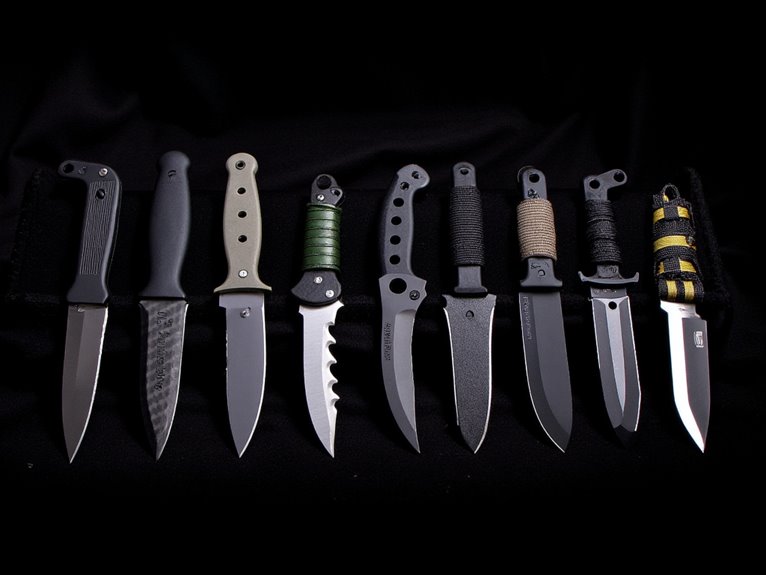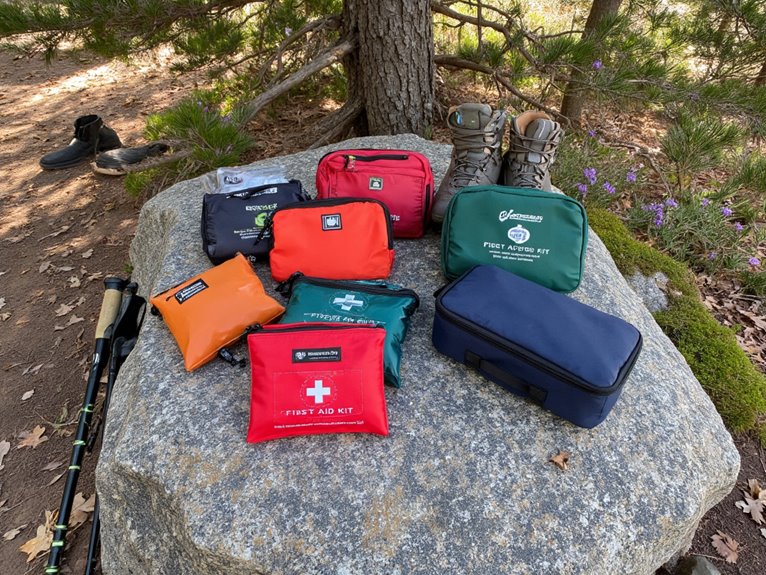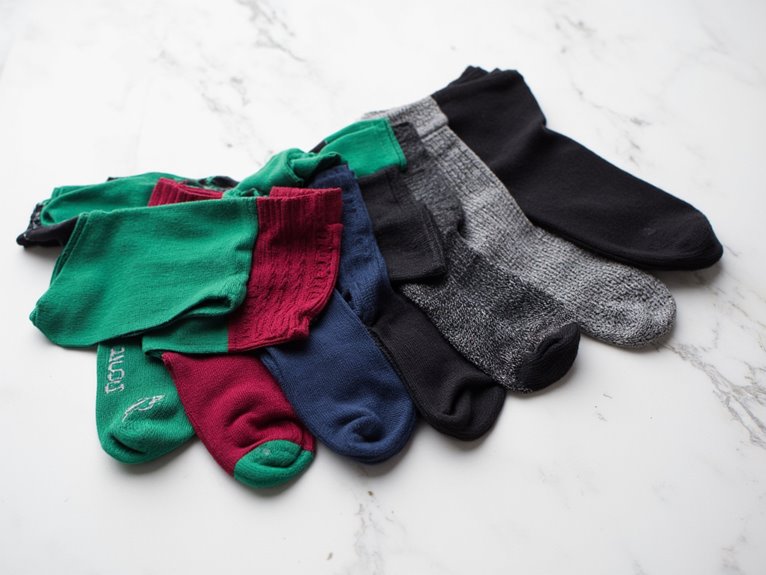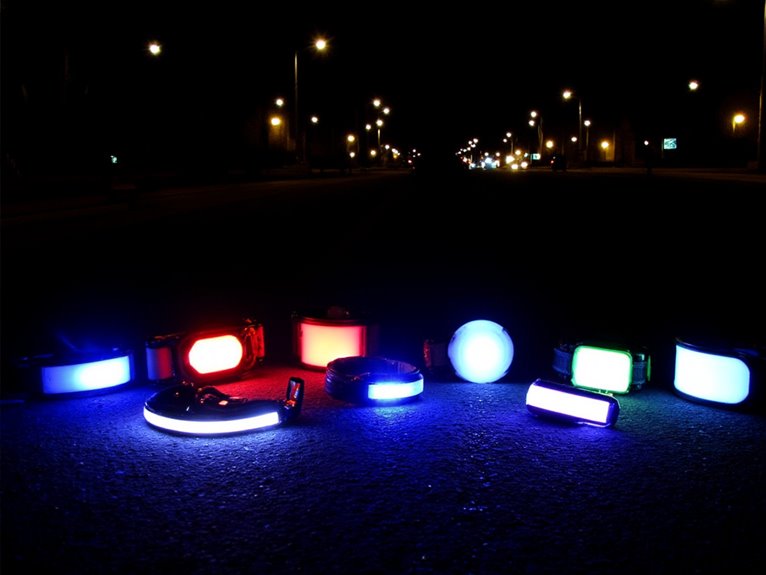How to Choose Ultralight Hiking Gear: Backpacks, Tents, and More
Start by targeting the “Big Four” gear categories that comprise 80% of your pack weight: shelter, sleep system, backpack, and clothing. Choose ultralight tents under 2 pounds using Dyneema fabric, down quilts with 950-fill power for warmth-to-weight efficiency, and frameless packs under 2 pounds for loads under 25 pounds. Replace heavy boots with trail runners and prioritize multipurpose items over single-use gear. Understanding these fundamentals will reveal advanced strategies for achieving sub-20-pound base weights.
We are supported by our audience. When you purchase through links on our site, we may earn an affiliate commission, at no extra cost for you. Learn more. Last update on 7th January 2026 / Images from Amazon Product Advertising API.
Notable Insights
- Focus on the “Big Three” gear categories-backpack, shelter, and sleep system-which represent 80% of your base weight for maximum impact.
- Choose frameless packs under 2 lbs for loads under 25 lbs, or framed designs for better weight distribution on longer trips.
- Select ultralight shelters weighing 2-4 pounds using materials like Dyneema or silnylon based on your budget and durability needs.
- Prioritize down-insulated sleeping bags (1-3 pounds) with compression sacks to reduce packed size by up to 40%.
- Replace single-use items with multipurpose alternatives and systematically test all gear before deployment to ensure reliability and performance.
Understanding Ultralight Principles and Philosophy
Although ultralight hiking begins with reducing pack weight, its core philosophy extends far beyond simply cutting ounces from your gear. You’ll discover that adopting a minimalist philosophy transforms how you approach wilderness experiences. This mindset prioritizes carrying only absolutely necessary items while replacing traditional heavy equipment with lightweight alternatives.
Mindful hiking becomes central to your practice. You’ll develop heightened awareness of physical sensations, breath patterns, and natural surroundings. This intentionality helps you distinguish between needs and wants when selecting gear.
The philosophy emphasizes quality experiences over gear accumulation. You’ll focus on energy efficiency and reduced fatigue through careful evaluation of each item’s purpose. This approach enhances your adaptability to varying conditions while supporting long-distance travel capabilities and minimizing environmental impact. Modern ultralight backpacks can weigh as little as 2.5 ounces while maintaining functionality, demonstrating how technology enables significant weight reduction without sacrificing performance. Each piece of gear becomes a deliberate choice based on utility and durability, fostering greater awareness of your consumption patterns both on and off the trail. By focusing on strategic selection of essential items, you’ll develop the skills to make smarter decisions that balance weight reduction with functionality.
The Big Four: Prioritizing Your Heaviest Gear Upgrades
Four categories of gear account for roughly 80% of your total base weight, making them the logical starting point for any ultralight conversion. Your shelter, sleeping system, backpack, and clothing represent the highest-impact gear swaps for weight optimization.
Start with your shelter. Traditional tents weigh 3-5 pounds, while ultralight options using Dyneema Composite Fabric drop to 16.4 ounces. The SMD Gatewood Cape exemplifies this dramatic reduction. Modern ultralight backpacking tents typically weigh between 3.75 to 4.6 pounds while maintaining waterproof ratings of 3000mm-4000mm for reliable weather protection.
Ultralight shelters using Dyneema Composite Fabric can slash tent weight from 5 pounds down to just 16 ounces.
Your sleeping system follows next-quilts eliminate redundant back insulation, while 950-fill down provides superior warmth-to-weight ratios. Consider inflatable pads made from lightweight materials that offer easy portability while maintaining essential comfort and insulation.
Backpacks like the Hyperlite Southwest 55 cut 3-4 pounds compared to traditional frames. Comprehensive reviews help you select the right ultralight pack based on your personal needs and hiking style. Finally, trail runners replace heavy boots, and strategic clothing selection using moisture-wicking synthetics completes your Big Four transformation.
Selecting the Right Ultralight Backpack
Your backpack choice hinges on two critical decisions that’ll determine your trail comfort and performance.
You must first decide between frameless designs that weigh under 2 pounds but require base weights below 12 pounds, versus framed models that add 4-8 ounces but handle loads up to 35-40 pounds with superior weight distribution.
The pack’s volume and fit directly impact your carrying efficiency, with most ultralight hikers needing 50-60 liters of capacity and torso measurements that match the manufacturer’s sizing chart within one inch for ideal load transfer. Modern ultralight packs feature aluminum and carbon fiber frames that enhance load transfer efficiency while maintaining minimal weight. Prioritize packs with padded shoulder straps and breathable materials to maintain comfort during extended trail time. Proper storage options ensure efficient gear organization and quick access to essential items during your hike.
Frameless Vs Frame Design
The frame versus frameless debate represents one of the most fundamental decisions in ultralight backpacking, directly impacting your pack weight, comfort, and hiking performance.
Frameless advantages include significant weight reduction, often saving 8-16 ounces compared to framed alternatives. You’ll also benefit from lower costs and simplified designs with fewer failure points. Modern frameless designs can pack down into compact pouches for convenient storage when not in use.
Frame benefits become apparent when carrying loads exceeding 20-25 pounds. Frames distribute weight evenly across your torso, reducing shoulder strain during long-distance hikes. They provide structural support for bear canisters and bulky gear while offering superior organization through multiple compartments. Frame packs offer enhanced ventilation by lifting gear off your back, preventing excessive sweating during strenuous climbs.
Your choice depends on trip duration and load requirements. Frameless packs excel for weekend trips under 25 pounds, while framed designs handle multi-day expeditions with heavier loads more comfortably. Frameless packs create a tighter fit against your body, allowing for more natural movement on technical terrain.
Capacity and Fit Considerations
Once you’ve settled on frame design, pack volume becomes your next critical decision point.
Most ultralight packs range from 30L to 65L, with 40-50L being ideal for long-distance hiking. You’ll want to match capacity to your gear load-smaller volumes like 30L work for minimalist setups, while 50L offers versatility for varying conditions.
Weight distribution matters just as much as capacity. Quality ultralight packs maintain a weight-to-volume ratio under 0.7 ounces per liter.
They’re designed to carry 25-35 pounds maximum. Proper fit guarantees even load distribution across your torso, reducing fatigue during extended hikes. Individual body size influences backpack choice for optimal comfort, particularly for those with slim shoulders and short torsos.
Look for adjustable straps and multiple attachment points. Consider whether you’ll need space for bear canisters or seasonal gear. These packs are constructed from advanced fabrics that provide superior abrasion resistance and UV durability for external outdoor use. For day hikers seeking ultralight options, backpacks that compress to palm-sized packages offer exceptional portability when not in use.
Choosing Ultralight Shelter Systems
When selecting an ultralight shelter system, you’ll encounter a fundamental trade-off between weight savings and livability that defines every decision in this gear category.
Material choice drives both shelter durability and weight comparison. DCF offers superior strength-to-weight ratios compared to ripstop nylon, while silnylon provides budget-friendly waterproofing. Design types range from pyramid shelters using trekking poles to traditional A-frame configurations.
| Material | Weight (oz/sqyd) | Durability | Cost | Weather Resistance |
|---|---|---|---|---|
| DCF | 0.51-0.75 | Excellent | High | Superior |
| Silnylon | 1.1-1.3 | Good | Medium | Good |
| Cuben Fiber | 0.34-0.75 | Excellent | Very High | Superior |
| Ripstop Nylon | 1.5-2.0 | Fair | Low | Fair |
| PU Coated | 2.0-3.0 | Good | Low | Good |
Space optimization requires balancing interior room against packed weight. Single-wall designs minimize weight but increase condensation risk, while double-wall systems enhance weather resistance through improved ventilation. For backpacking applications, target the optimal 2-4 pound weight range that provides the best balance between portability and essential features like dual vestibules and reliable weather protection.
Optimizing Your Sleep System for Weight and Warmth
Your sleep system represents the heaviest gear category in your pack, making weight optimization critical for ultralight hiking success.
You’ll face constant trade-offs between sleeping bag insulation levels, pad R-values, and temperature rating accuracy that directly impact both pack weight and sleep quality.
Understanding these three key factors allows you to build a system that maximizes warmth-to-weight ratios while maintaining the thermal protection you need for specific conditions.
Target ultralight sleeping bags weighing 1-3 pounds with down insulation that compress to 11-14 inches for optimal portability without sacrificing warmth efficiency.
Sleeping Bag Weight Reduction
Since your sleep system typically represents 15-20% of your total pack weight, reducing sleeping bag weight offers one of the most substantial opportunities for cutting pack pounds.
The down vs synthetic choice creates the biggest impact-premium down quilts like the Hammock Gear Burrow 30 weigh just 17.4 ounces compared to synthetic alternatives exceeding two pounds.
Temperature ratings demand precise matching to conditions; overbagging wastes weight while a 30-40°F bag weighs considerably less than 20°F options.
Modular sleep systems combining quilts with overwear provide adjustable warmth without single-bag bulk.
Effective layering strategies using base layers and puffy jackets inside your bag extend warmth range, eliminating need for heavier ratings while maintaining comfort.
Look for bags with compression sacks that can reduce packed size by up to 40%, compressing your sleeping system down to water bottle dimensions for maximum space efficiency.
Pad Insulation Trade-offs
After securing an ultralight sleeping bag, your pad choice becomes the second-most critical sleep system decision for weight-conscious hikers. Understanding insulation types directly impacts R value importance since materials like closed-cell foam offer consistent thermal resistance while air pads provide superior compressibility.
Material selection involves considerable comfort trade-offs-you’ll sacrifice some warmth for reduced weight impacts in ultralight designs.
Technical specifications matter considerably:
- Baffle design affects durability and heat retention
- Valve systems determine inflation speed and reliability
- R-values range from 2.0-4.8 for ultralight options
- Weight typically spans 8-20 ounces
Sleeping system layering optimizes performance without major weight penalties.
Durability factors include seam integrity and puncture resistance. Maintenance strategies involve proper storage and regular valve cleaning to extend lifespan.
For optimal comfort on uneven terrain, consider pads with advanced air cell technology that provides targeted support and even weight distribution, particularly beneficial for side sleepers who require enhanced cushioning.
Temperature Rating Accuracy
Temperature ratings on sleeping bags aren’t as straightforward as they appear on product labels. These ratings follow EN 13537 or ISO 23537 testing protocols using heated thermal manikins on standardized pads.
However, lab conditions don’t account for your individual metabolic rate, sleep habits, or real-world variables.
Different insulation materials affect rating accuracy. Down performs differently than synthetic fills despite similar weights.
Construction details like baffles and draft tubes influence actual thermal performance beyond the stated rating.
You’ll find variability between brands due to different manikin shapes and test procedures. Many manufacturers supplement standard tests with user feedback to improve accuracy.
Consider ratings as guidelines rather than absolutes. Select bags rated 5-10°F below your expected overnight temperatures, and research real-world reviews for practical performance data. For practical comfort, experienced hikers recommend adding 25-30 degrees to manufacturer temperature ratings to determine actual comfortable sleeping conditions.
Building a Minimalist Clothing Strategy
When you’re building an ultralight clothing system, every garment must earn its place in your pack through versatility and efficiency. Effective layering techniques demand base layers with moisture-wicking properties, mid-layers for insulation, and outer shells for weather protection.
Smart fabric choices include merino wool for natural antimicrobial benefits and synthetic blends for durability. Merino wool base layers excel in ultralight systems because they provide exceptional moisture-wicking properties and natural temperature regulation without the bulk of synthetic alternatives.
Your minimalist strategy should prioritize multi-functional pieces that adapt to varying conditions. Focus on these core principles:
- Base layers: Choose mesh grid fabrics that trap air while transporting moisture
- Mid-layers: Select down jackets for camp warmth, lightweight fleece for active use
- Outer layers: Pack waterproof shells weighing under 8 ounces
- Accessories: Include convertible pants and UPF-rated sun hoodies for versatility
This approach eliminates redundant items while maintaining comfort across temperature ranges.
Essential Gear and Weight-Saving Techniques
Every ounce you carry on the trail compounds into pounds of unnecessary burden over thousands of steps, making strategic gear selection your most powerful tool for ultralight success.
Essential gear optimization requires ruthless evaluation of each item’s weight-to-function ratio. Weight saving techniques focus on multipurpose functionality and material efficiency.
| Traditional Gear | Ultralight Alternative |
|---|---|
| Tent (3-4 lbs) | Tarp + bivy (1.5 lbs) |
| Sleeping bag (2.5 lbs) | Quilt (1.2 lbs) |
| Dedicated pillow (8 oz) | Puffy jacket pillow (0 oz) |
| Full cookset (12 oz) | Cold soaking (3 oz) |
| Separate tent poles (10 oz) | Trekking pole support (0 oz) |
For cooking gear, ultralight options like the MSR PocketRocket 2 weigh just 2.6 ounces while maintaining full functionality for hot meals on the trail. Track every gram using digital scales and spreadsheets. Share group gear like stoves and water filters among partners. Choose materials like Dyneema and titanium for maximum strength-to-weight ratios. These systematic approaches deliver measurable pack weight reductions.
Balancing Comfort, Safety, and Weight Reduction
Ultralight hiking success depends on finding the ideal balance between pack weight, personal comfort, and trip safety rather than pursuing weight reduction as an absolute goal.
You’ll need systematic gear testing to validate equipment performance before remote deployments.
Critical safety items remain non-negotiable regardless of weight penalties. Your first aid kit, navigation tools, and repair supplies can’t be compromised for lighter loads.
Focus weight reduction on these areas:
- Replace single-use items with multipurpose alternatives
- Upgrade your “Big Three” (pack, shelter, sleep system) gradually
- Select materials like Dyneema that offer superior strength-to-weight ratios
- Optimize consumables without dropping below safety minimums
Prioritize comfort features like ergonomic pack straps and contoured sleeping pads. These prevent injury and fatigue that compromise trip safety more than extra ounces.
Consider ultralight stoves that weigh as little as 2.6 ounces while maintaining fuel efficiency and reliable performance for essential cooking needs.
Frequently Asked Questions
How Much Does Ultralight Gear Typically Cost Compared to Traditional Hiking Equipment?
Your ultralight cost analysis reveals surprising savings compared to traditional gear.
Complete ultralight setups cost roughly $1,140 versus $2,200+ for conventional Appalachian Trail equipment-about $1,000 less.
Budget ultralight options like Durston X-Mid 2 tents ($269) and discounted minimalist backpacks ($190) make quality gear accessible.
You’ll buy fewer items overall, offsetting higher per-piece costs through minimalism and strategic purchasing.
What Are the Best Ultralight Gear Brands for Beginners on a Budget?
You’ll find excellent budget brands offering quality beginner options without breaking the bank.
Osprey’s Ultralight Stuff Pack costs just $35 for 18 liters at 4 ounces.
Gossamer Gear’s The Two tent weighs 24 ounces for $320.
Enlightened Equipment’s Enigma Quilt delivers 13.5 ounces at $215.
Nightcore’s NU25 headlamp provides reliable illumination for $35 weighing 1.9 ounces.
These manufacturers balance affordability with ultralight performance perfectly.
How Do I Maintain and Repair Ultralight Gear in the Field?
Field repairs require a minimalist kit containing patches, seam sealant, zipper lubricant, and duct tape.
You’ll patch holes immediately using appropriately sized patches to prevent tear expansion. Apply seam sealant to waterproof fabric leaks and tent punctures.
Lubricate stuck zippers with specialized products, never improvised wax.
For gear maintenance, rinse salt buildup from hip belts and shoulder straps regularly.
Handle equipment gently during setup to minimize damage.
Can Ultralight Gear Handle Extreme Weather Conditions Like Heavy Rain or Snow?
You can rely on ultralight gear in extreme weather with proper selection and setup.
Modern waterproof materials like those in Zpacks Vertice Rain Pants deliver full protection at just 3.2 oz while exceeding Gore-Tex breathability.
Quality insulation options include down bags rated to 20°F and layering systems for thermal management.
However, you’ll need careful site selection and tensioning since ultralight shelters sacrifice some durability for weight savings.
What’s the Minimum Base Weight Considered “Ultralight” by Hiking Community Standards?
You’ll find the minimum weight for ultralight standards sits at 4.5 kg (10 lbs) base weight across most hiking communities.
Super ultralight pushes below 2.3 kg (5 lbs), while lightweight extends to 9 kg (20 lbs).
Base weight excludes consumables like food and water.
There’s no official standard-definitions vary by region and community preferences, but 10 lbs remains the widely accepted threshold.
On a final note
You’ve now got the framework to cut pack weight considerably. Start with your big four items-they’ll deliver the largest weight savings. Don’t compromise safety for ounces saved. Test your gear system before committing to long trails. Remember that ultralight hiking requires careful planning and skill development. Your comfort zone will expand as you gain experience. Focus on multi-use items and eliminate redundancies. Every ounce you shed translates to miles you’ll enjoy more.




